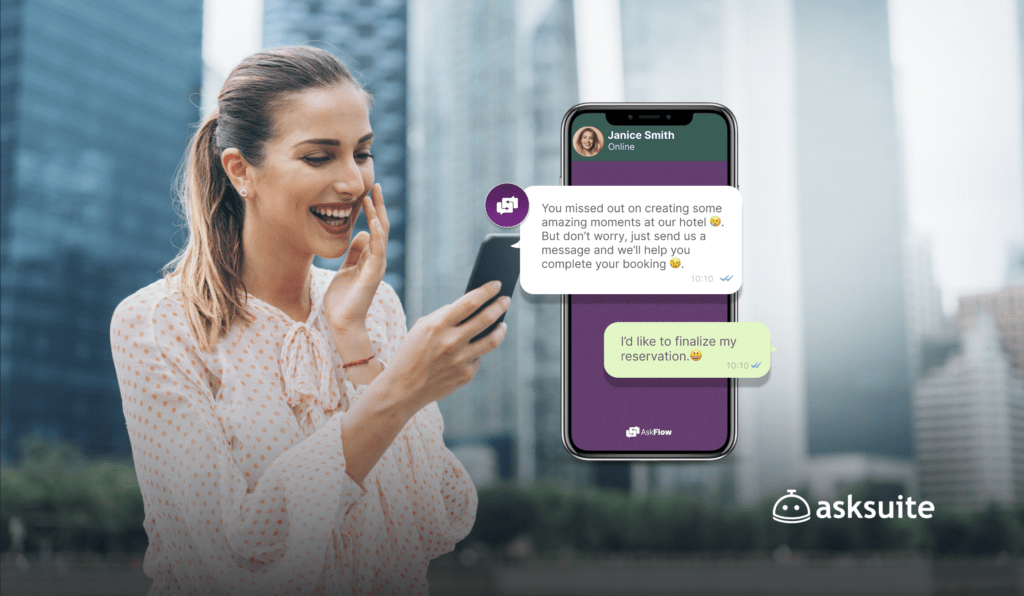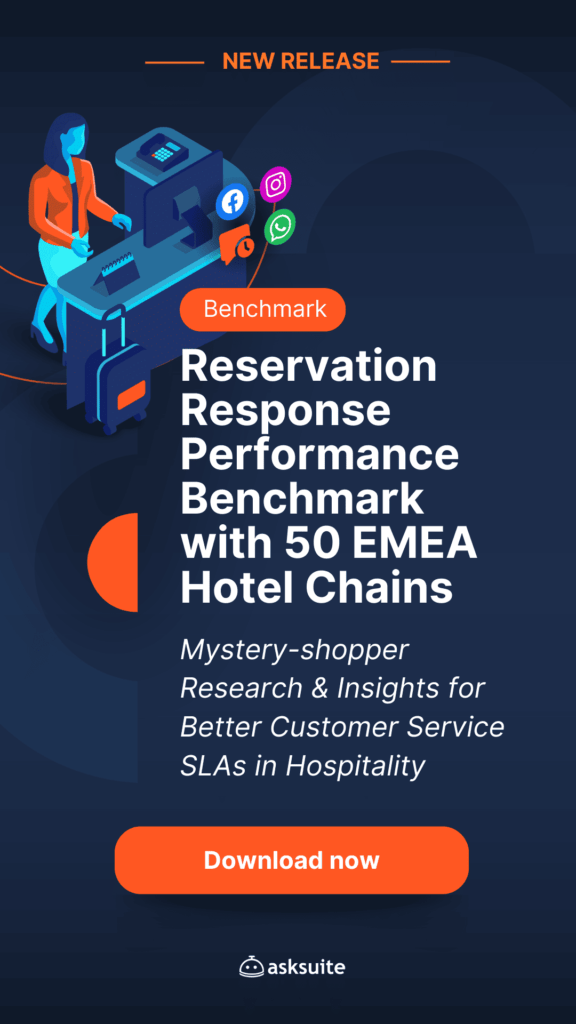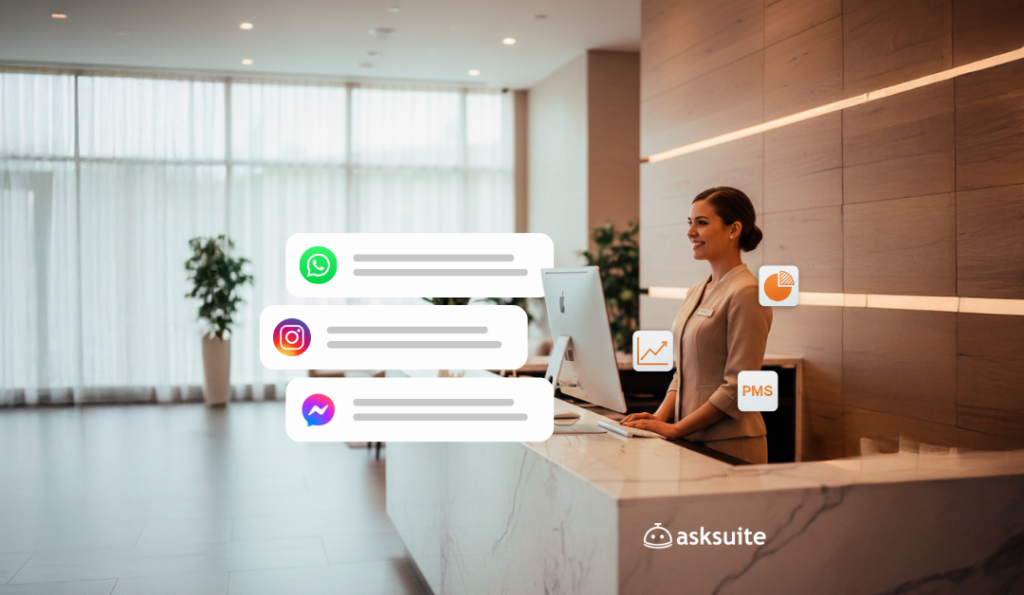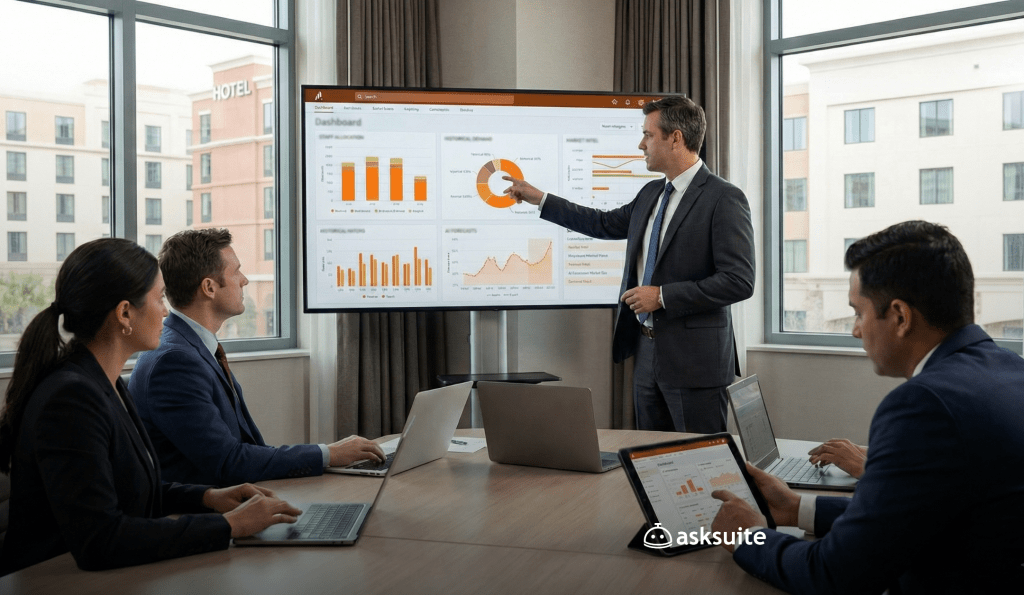In a world of constant changes, some people may not even recall a time when computers or any kind of innovation existed, not just when it comes to hotel technology. Although many understand the importance of hospitality-driven tech tools, still some do not know how they came about.
There was a time when no such thing as data tracking and where prices remained flat and not dynamic. Did you know that in the 1940s and 1950s the average hotel price was $5 per night?
It is hard to believe that 73 years ago the first hotel reservation system was created by Westin (1947), Hoteltype. Prior to this, hotels were known to be using a series of books and pages to keep track of the guests who were booking rooms and who were checking into the hotel.
Given just how busy the hotel industry is today, it is almost impossible to imagine what it would be like to have to take care of everything with a register at the front desk. Now when bookings are made via many different points of sale, it’s a struggle to believe that for years, even until 2010, reservations were made by telephone, telegram, or post.
So before we go ahead and explain how things are done nowadays, we need to create a timeline of hotel technology advancements, some of which are mind-boggling based on today’s world, many of which occurred in the USA.
The timeline of hotel technology evolution
Westin’s revolutionary idea paved the way for the first-ever electronic system and toll-free number introduced by Sheraton in 1958, Reservation. This made Sheraton the first hotel chain to centralize and automate its reservations function.
But the story of technology begun many years before Reservation. Here is the timeline of hotel tech advancements:
Part I: From zero to the first automated reservation system
- 1859: The first elevator was installed in Fifth Avenue Hotel in NYC. It was a pully and not fully automated like today.
- 1894: The Netherland Hotel company in NYC installed the first-ever in-room phones. This would pave the way for Teledex to be established in 1986, almost 92 years later!
- 1910: It was common for hotels to now have electricity
- 1920’s guest accounting, bookkeeping begins
- 1927: The first-ever radios were installed in rooms at the Boston hotel
- 1946: Westin allows for the first-ever credit card, Charge-It to be used in their hotels. This paved the way for Diners Club Cards in the 1950s
- 1947: Televisions are introduced into hotel rooms. By 1951 Hilton Group made televisions mandatory in all bedrooms.
- 1947: Westin create Hoteltype- kickstarting the reservation revolution
- 1958: Sheraton create the first automated reservation system, and toll-free number starting the brand’s evolution and property to property bookings
Part II: tech inside hotel rooms
- 1960’s air travel was becoming increasingly popular which sparked the world of GDS. This was the beginning of dynamic pricing and a portal where agents could see inventory. The foundations of Online Travel Agencies today.
- 1966: Intercontinental group joined the party by introducing vending machines and ice machines on floors
- In the 70’s many of the legacy systems, still in use today were created such as micros and room keys.
- Between 1973 and 1976 hotels began to introduce movies and popular paid-for TV subscriptions, such as HBO as part of the guest experience.
- 1982-1986 : Teledex is created, thus allowing for room service, chargeable calls, and interaction with family members also in the hotel. Interestingly the first-ever Teledex phone the Teledex Diamond is the most popular model on the market. Since then, more than 15 million Teledex brand hotel phones have been installed in 125 countries.
Such a revolution paved the way for smartphone technology which many hotels use today for an added guest experience such as Handy which allows you to explore your local area, browse online and even call home without using your own data. Handy was quickly replaced by our own mobile technology with free-roaming and wifi.
- 1983: The revolution of Vingcard came about, electronic locks that would change guest’s safety and how we access rooms today via mobile app, QR codes, or waving a key. Up until the late 2000s and even now in parts of the world you still get a physical key! In many branded chains it is now mandatory to have keyless entry with double-barrel locks for guest safety and security.
PART III: Hotel Systems Technologies
- 1980’s seen the beginning of tracking guest data, recording names, addresses and contact details. This would lead towards CRM systems, customer engagement, offers, and marketing in a decade of warp speed advancing technology space. To think this is still an issue almost 40 years later with hotels tracking guest’s data is startling.
- 1990’s rates started to evolve and following airline dynamic pricing. We realized we could create packages for the guest, could offer multiple prices and amenities.
- From 1990- 2005 the Online Travel Agent space evolved
- 1994: The first-ever hotel chain websites were created by Hyatt Hotels and Promus Hotel Corporation. It’s hard to believe that this is 26 years ago! Up until this time hotels would be features in travel catalogs or brochures. Travelweb was the first company to put them online in the same year! 26 years on and the internet hasn’t wowed over everyone as people still like to have hotel brochures and travel partners regularly feature hotel offers in paper form.
- 1995: Promus Hotel Corp is still advancing moving into a real-time central reservation space. Here guests could make a booking and arrive at the property. Holiday Inn and Choice Hotels Group took it a step further that same year by creating the first online booking engine for their hotels. This same year allotments and group block functionality went live in PMS systems, something that hotels still struggle with 25 years on!
- The 1990s paved the way for a lot of the systems still in use today, which have been the bones of cloud-based technology and open APIs. 10 of the largest systems in the world came alive in this decade, some of which have made huge technological jumps and others who remained as they were.
- 2000’s seen the evolution of rate management. The creation of Revenue Manager positions and rate shopping tools.
- 2003: Wifi took over the hotel world. By the end of 2003 over 6000 hotels globally had wifi. Given how we rely on wifi for even the basic jobs such as turning on the lights or boiling the kettle, it’s hard to believe that in some properties you still need to pay for usage in your room and that it’s only free in lobbies.
- 2007: the mobile revolution with the introduction of the iPhone changed the world as we know it. Hotel chains, travel groups and online travel agents begin their domination of the industry.
- 2009: Intelity launches its in-house app for hotel chains. This allowed hotels to upsell operational enhancements or services to the guest. This encouraged hotel chains to introduce their own apps, for the OTA’s to also invest as they saw that more and more people carried a smartphone and made their hotel choices last minute with their “pocket computers”
- 2010 was a big year in hotel technology.
A world of CRM and PMS
It led hotels to focus on customer interaction. This begins fuelling the idea and creation of customer relationship management systems (CRM). As time and customer journeys evolved this allowed for hotels to utilize a combination of practices, strategies, and technologies that companies use to manage and analyze customer interactions and data throughout the customer lifecycle, with the goal of improving customer service relationships and assisting in customer retention and driving sales.
Salesforce and others similar were born into the world from this idea. We became more focused on business intelligence tools and focusing on where our business was coming from. The same year we saw the creation of the first cloud-based PMS which would evolve over the coming decade. iPads were launched and instantly added to rooms as an amenity to drive hotels “tech-friendly” and “tech-advanced” sales spins.
Integrations and more hotel tech
The integration of distribution channels to PMS systems or channel managers boomed from 2010 onwards, yet today we still have integration issues.
- 2012: hotel apps take over! Conrad hotels worked with Intelity again, however this time the app was real-time. Guests could order room service, request extra linen or services while in house. It was seen as a “bridge to the guest”
- 2015: The evolution of mobile check-in/ out and kiosks to self-check-in. The technology would evolve slowly, with airlines being the main industry to utilize this until 2020 when Coronavirus (Covid-19) sparked the world into a contactless environment, one many people embraced years prior.
- 2016: the first robot ran hotel opens in Asia. We can learn so much from the technological advancements of Asia, in particular Japan and China.
- 2017: API began its life cycle
- 2018: interactive chats with guests via messaging apps
- 2019 multiple methods of online payment come into play which also diversifies how hotels do business
The cloud-based systems
Today there’s over 300 PMS on the market, some of which are legacy systems from the 70/80s. However, they still are functional based on hotels’ needs, but many are at end of life without support. Many of the technological powerhouses such as Oracle or Protel have advanced in the cloud-based world, while still offering support to some of their standalone technologies.
In today’s world, we are still battling with PMS systems to extra the correct data, and in some cases, they are just large complex excel sheets that rely on SQL to pull the information needed. We still do not have the one magical tech stack that will do everything, and be real-time in regards to pushing and receiving data and bookings.
Although we have seen a rise in cloud-based systems, many people still prefer standalone technology systems that plug into in-house servers rather than online. It’s reliable, has little or no downtime. But, it does come with a lack of innovation or plug-in technology for future optimization.
Instead, it’s an expensive plug-in to the front desk. While cloud technology is still advancing, it is fast becoming popular amongst hoteliers, with a rise in cloud-based start-ups in the last 3 years. We have seen sales managers market their tools as open APIs, cheaper, user-friendly, better support, and allows for a more innovative way to reach guests and next-level reporting suite. However is this really the case?
While for many having new technologies is a case of innovation and moving with the times, this technology can be expensive. Hotels do not necessarily need to have a large tech stack, however, should invest in a good PMS, CRM, and Channel Manager.
Have a hybrid system would be the most advantageous to a hotel. A system that not only plugs into a server but can be remotely accessed that also allows for the hotel to plug additional systems at their will, rather than a long wait for approval, which is costly.
Next level in hotel technology evolution: Open APIs
We have seen and heard about the open API movement in the last 2 years, although API began in 2017. Explaining Application Programming Interface: when you use an app on your device or phone, the application connects to the Internet and sends data to a server. That is where API comes in.
The API takes your request and tells the system what to do. Hotels that use an API-first PMS receive all the benefits of cloud-based systems and near-immediate implementations as well as the ability to integrate (nearly) any feature they want. API- PMS is very different from a cloud PMS.
An API-first system means that the PMS will connect with ANY third-party software. It is designed with the API first, then the PMS is built on top of it so that all integrations are open and available. The advantage of this means the PMS doesn’t have to be rebuilt every time a new feature is added, which is the case with most.
Whilst API boasts that it can be seamless and almost integrate anyone, this is not the case. You can experience delays if you are integrating with a partner who is not seen as a “strategic partner” to the company. Also, there can be hidden costs in connections or distribution fees.
We know that API data share can be quickly compared to traditional distribution pushes. Nevertheless, this can be decreased when you add additional features that do not work correctly or synchronize with your tech stack, creating a delay to market.
API also is seen as a partnership and not a vendor relationship, as there can be many stakeholders involved. Something to be mindful of when it comes to technical support and enhancements.
Evolution of Hotel Technology: Starring PMS
Previously a hotel property management system was defined as a platform that enabled a hotel or group of hotels to manage front-office capabilities, such as booking reservations, guest check-in/check-out, room assignment, managing room rates, and billing.
Hotel PMS delivered a software platform that replaced time-intensive, paper and spreadsheet-heavy processes. However, we have seen through the last 70 years technology has evolved and greater integrations offer services that extend well beyond the front desk.
With the evolution of hotel technologies, hotel PMS is now a critical business operations system that enables hoteliers to deliver a seamless guest experience. Hotel PMS now integrates to other onsite services that impact the guest’s complete experience, including- PMS, sales & catering, reporting suites, accounting suits, loyalty, mobile apps, mobility of keyless and virtual check-in and out, distribution, and optimization and customer relationship management.
 About the author: Khristina is an accidental hotelier who fell in love with the industry while studying a different path, and never left. She is an experienced commercial manager working in the hospitality industry and show manager of Revenue Hacks, a weekly show on LinkedIn in association with RaizUp. She is an advocate for change within hospitality through stopping silo’s, embracing technology, and a change in how revenue is thought within education.
About the author: Khristina is an accidental hotelier who fell in love with the industry while studying a different path, and never left. She is an experienced commercial manager working in the hospitality industry and show manager of Revenue Hacks, a weekly show on LinkedIn in association with RaizUp. She is an advocate for change within hospitality through stopping silo’s, embracing technology, and a change in how revenue is thought within education.





